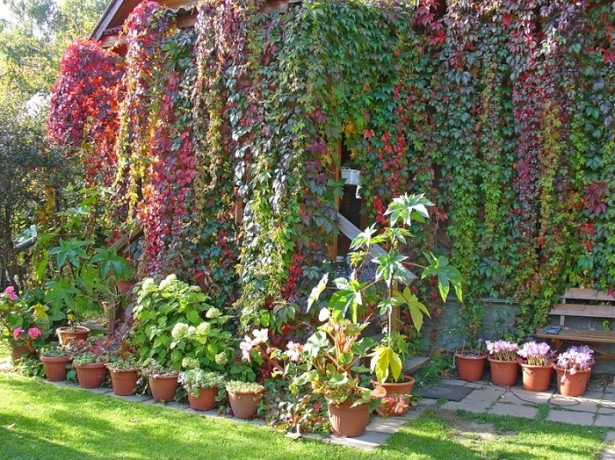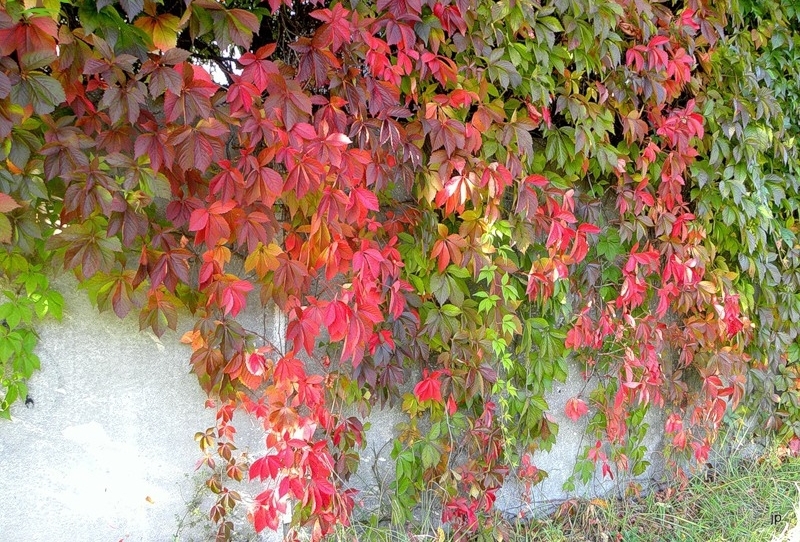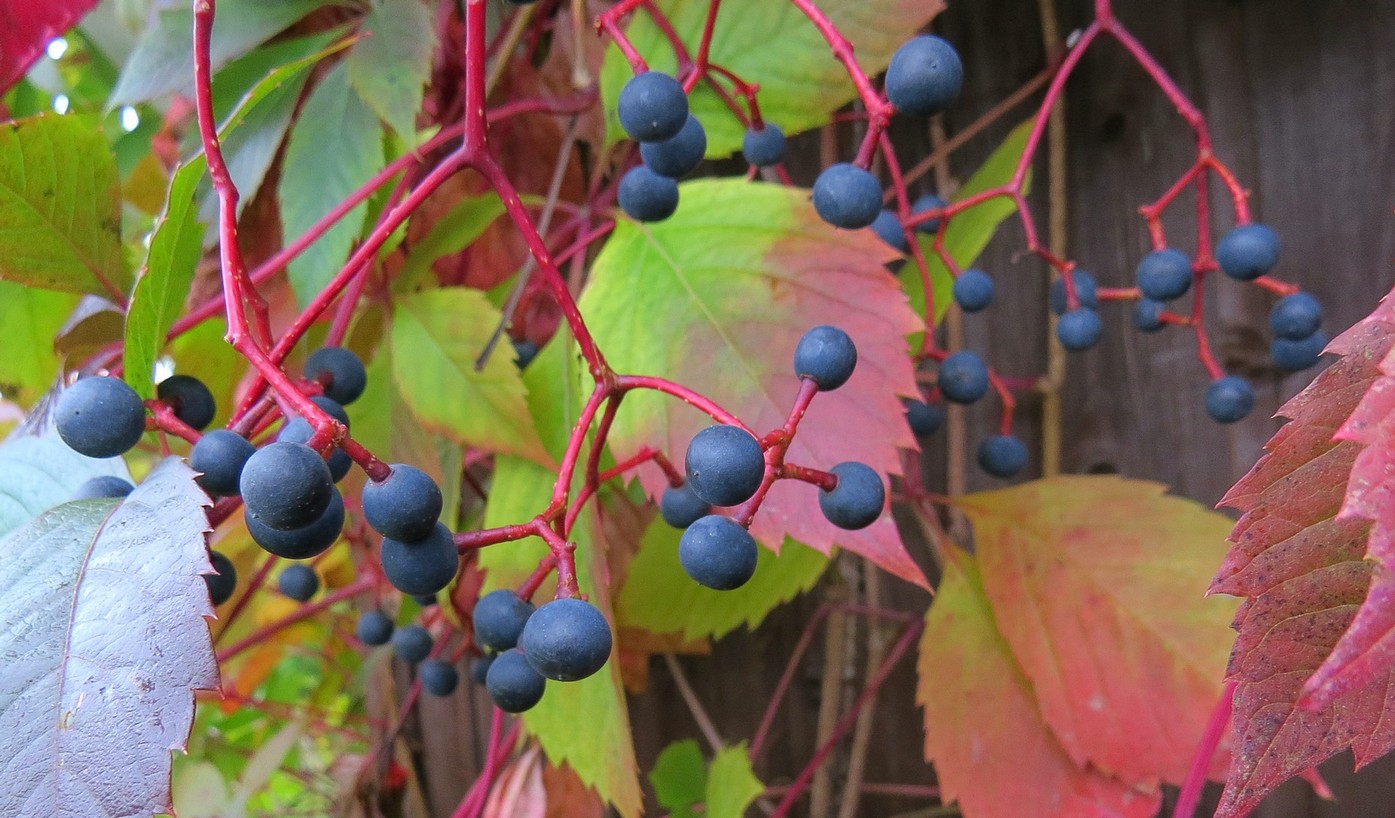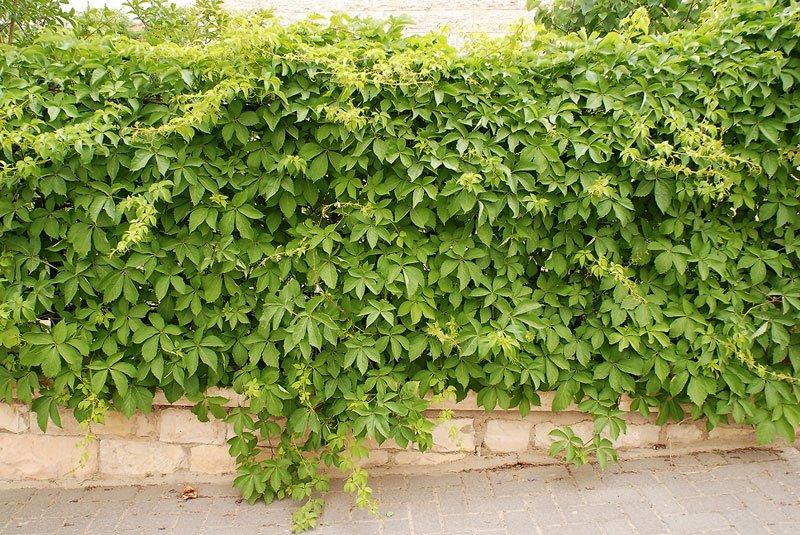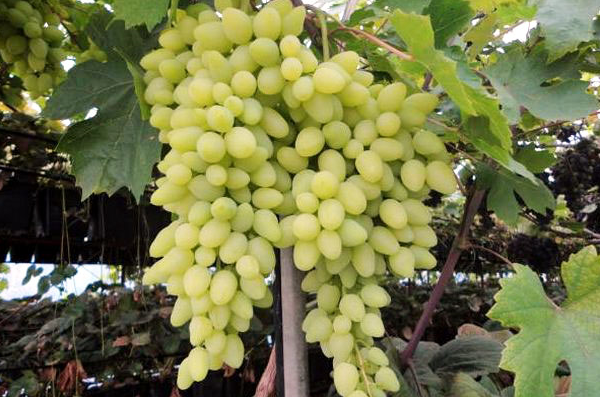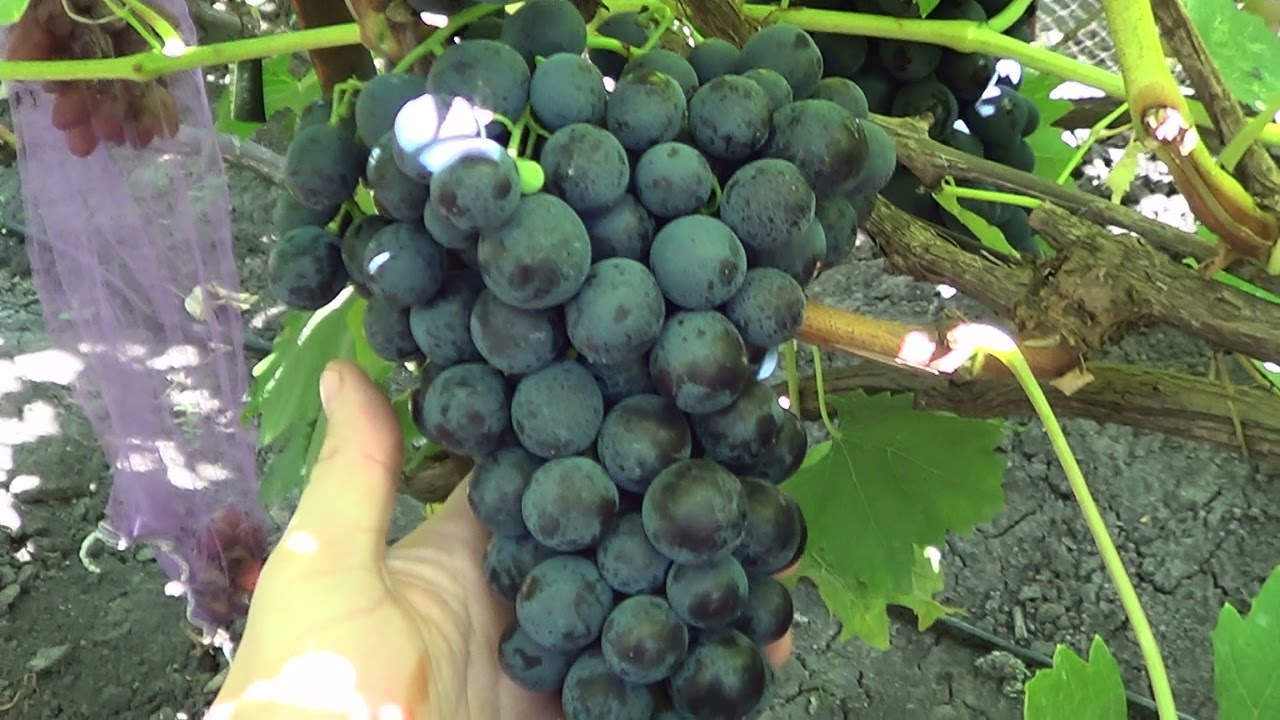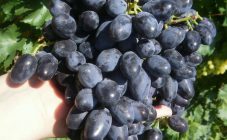Content:
The decoration of many household plots is decorative weaving lianas, among which the maiden five-leaf grape is considered the king. Its high popularity has many reasons, among which is its external beauty.
Variety of decorative grape varieties
It would seem that nature has assigned grapes to yield tasty and healthy berries, but viticulture includes many varieties of decorative varieties, the fruits of which are of secondary importance. The most unsightly building can be ennobled and give it an attractive appearance, simply by letting shoots of girlish grapes along its wall.
The length of one lash can reach 30 m, so the plant is quite suitable for decorating buildings up to 7-8 floors in height, and on a personal plot, the vineyard can easily braid the fence, walls of a house, greenhouse, etc. Due to this decoration, the site receives additional protection from noise, excess air humidity, dust.
The ancestor of the maiden grape is the deciduous vine Parthenocíssus quinquefolia (Latin for parthenocissus quinquefolia), whose homeland is North America. In total, 19 types of decorative ivy are cultivated in garden culture, but only two have taken root in Russia:
- five-leafed (virginian);
- tri-pointed.
A grape leaf is 5 together folded spiky non-accrete green leaves. The most decorative type is Engelman. The size of its leaves is up to 12 cm. In summer, the foliage is dark green with a reddish petiole, and in the fall, with the arrival of cold weather, it becomes carmine with a purple undertone. Scourges grow by 0.5-1 m per year.
Tri-pointed (three-leafed) girlish grapes easily climb vertical smooth surfaces, as they have many tendrils with suckers at the ends. On the branches there are leaves with three teeth. The crown of the liana grows very densely, forming a completely opaque cover. Ivy scourges grow up to 10 m in length.
For 1-2 years, the trifoliate ivy-shaped liana does not grow very quickly, but after taking root in the future, it grows by 2 m per year.
Some of the most popular five-leaf varieties include:
- Don Juan. It is valued for its long growing season (up to 20 years), frost resistance and beautiful dense foliage, which turns into a rich scarlet color in autumn.
- Yellow Wall (Yellow Wall). It gives lashes up to 14 m in length, and in autumn it turns into a rich yellow color. It looks extremely decorative in combination with other varieties, diluting the continuous canvas with bright spots.
- Star Showers. Its foliage has an unusual color: in summer, green spots on the leaves alternate with white ones, and in autumn the white color gradually turns into pink, green - into red.
Vici grapes: planting and care
When choosing a variety for planting, it is important to consider one feature of ornamental grapes. If you choose a well-lit place for planting, then in the fall the ivy foliage will acquire a beautiful red or yellow color. However, on the shady side, where there is little sun, the leaves will remain green in the fall and fall off the same way.
All varieties are unpretentious.The grower can set aside almost any free piece of land for planting, especially along the fence of the site. However, in order for young seedlings to quickly start growing, the soil should be prepared: dig up shovels for 1-2 bayonets and apply organic fertilizers. If a damp site is selected, then sand is added to the soil before planting to prevent stagnation of water at the roots.
A pit 0.5-0.7 m wide and 0.5 m deep is prepared for planting each seedling. It is good to pour a small layer of small pebbles or crushed stone or broken brick on the bottom. If there are a lot of seedlings, then they dig a trench, and then plant them, observing a gap of 0.5-0.7 m between the plants. The optimal composition of the soil poured into the trench is garden soil, compost and sand in a ratio of 2: 2: 1.
The dark blue berries ripen in September and have 1-2 to 5 seeds inside. Most varieties require mandatory stratification, that is, placing the seeds in the cold a month or two before sowing. You can plant them in seedling boxes in spring or in open ground at the end of March. However, you can freely sow in open ground in the fall at the end of October. The embedment depth is small - up to 1 cm.
Can you recommend girlish grapes to novice gardeners?
Caring for decorative ivy is not difficult, but it will require some effort from the gardener. The most difficult stage is the preparation of trenches for planting, since their depth is 0.5 m. In the future, you need to observe the growth of plants, directing their branches in the right direction, cutting off the excess. In rainy regions, watering may not be required at all, but in arid regions in the first 2-3 years, it will have to devote a lot of time.
If you already have experience in growing table or wine grapes, then it will not be difficult to cope with a girl's one. He does not need such complex pruning, and the fruits do not need to be collected and processed, since they do not represent nutritional value. If there is no experience in gardening, then you will need to learn some grooming skills, however, not at all difficult.
